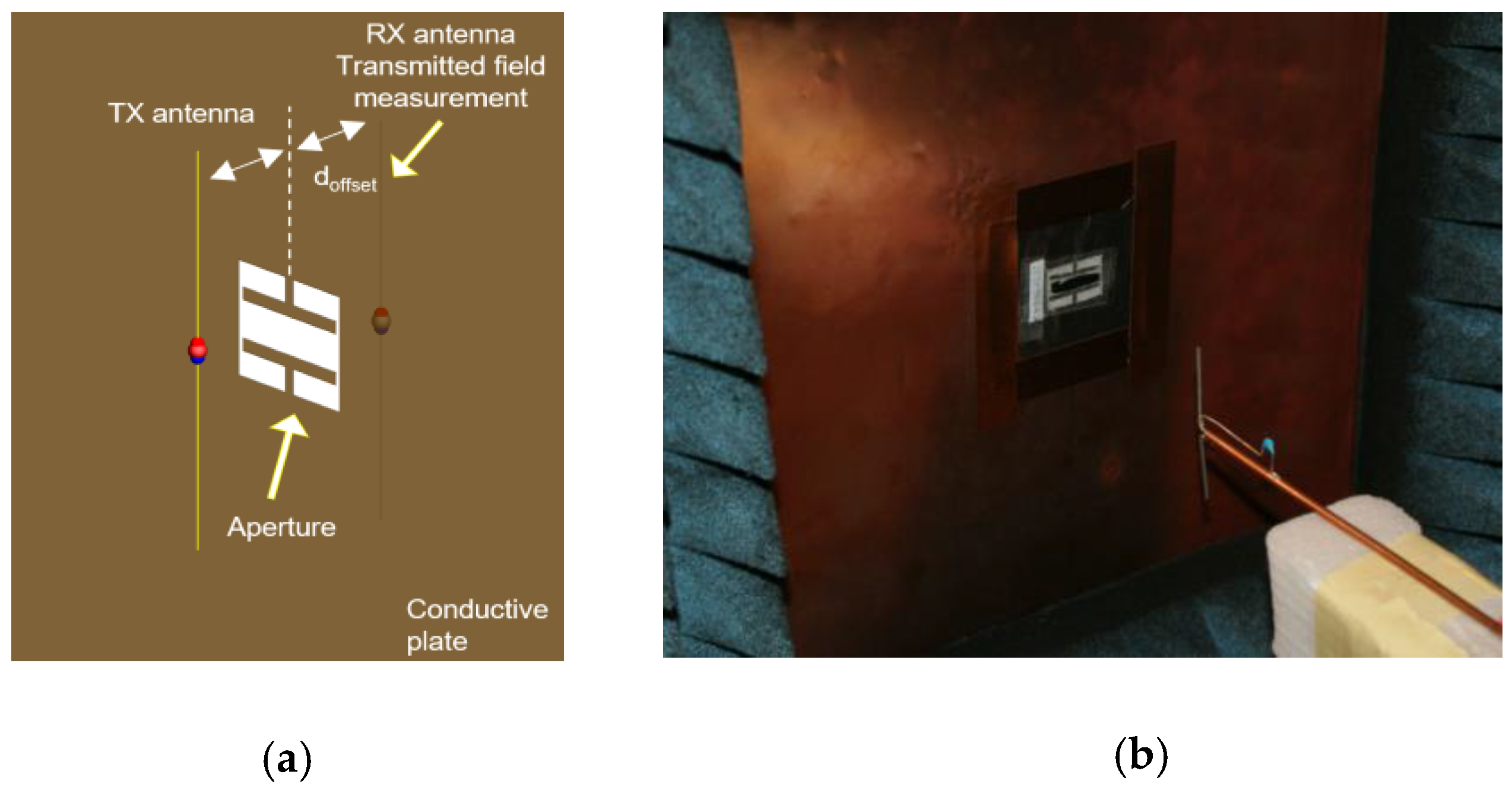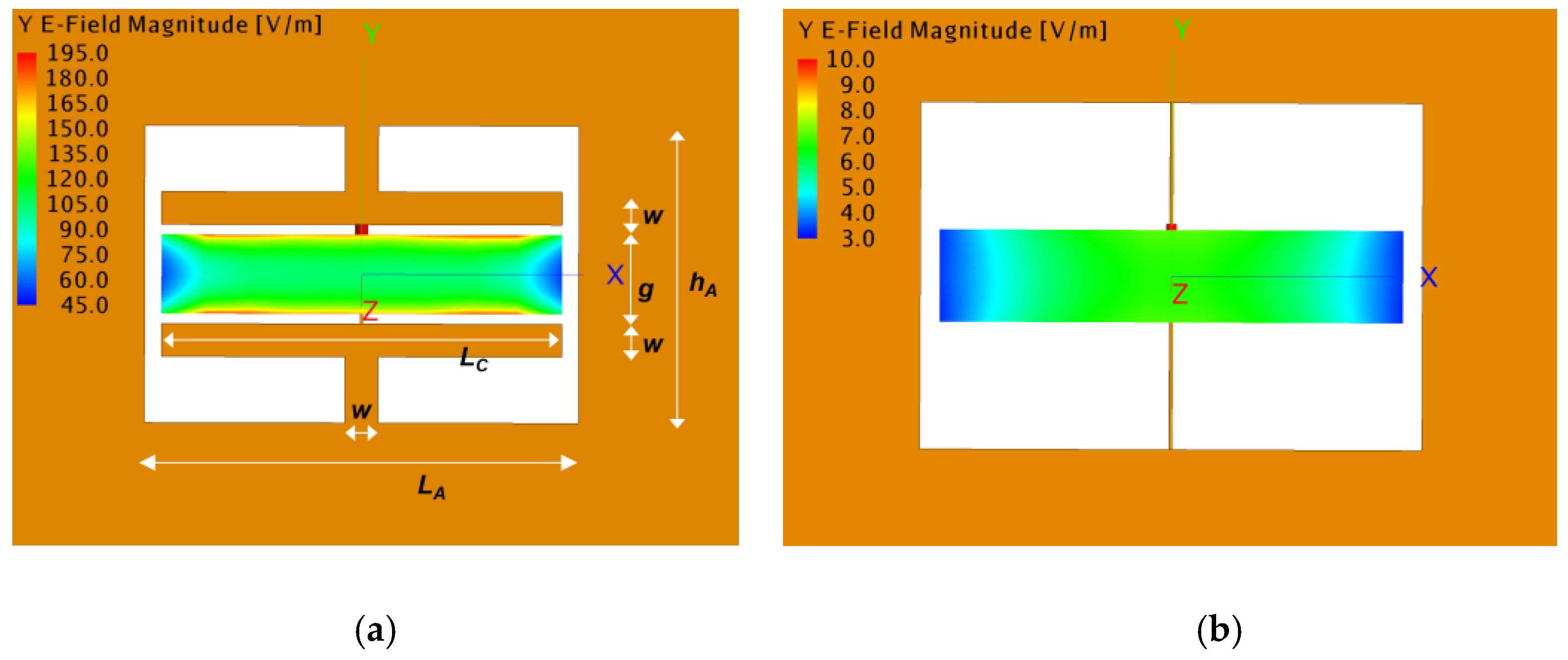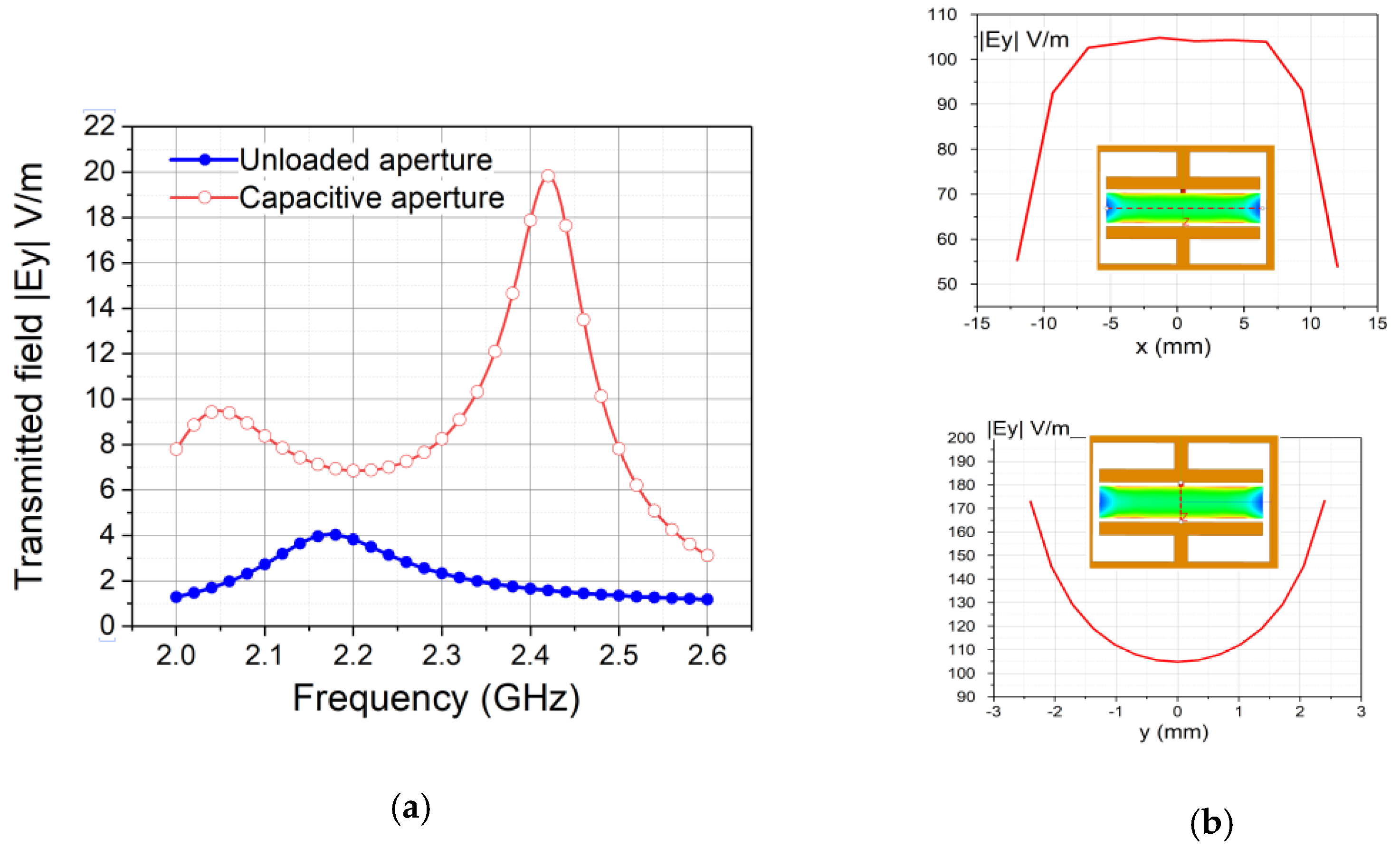Electromagnetic Characterization of Engineered Materials Using Capacitively Loaded Aperture Sensors †
Abstract
:1. Introduction
2. Materials and Methods
2.1. Measurement Setup Geometry
2.2. EM Field Enhancement in the Capacitevely Loaded Aperture
2.3. Material Sample Permitivity and EM Loss Characterization Using Equivalent Circuit Model
3. Experimental Results and Discussion
Acknowledgments
Conflicts of Interest
References
- Yang, P.; Xiao, M.; Li, S. 6G Wireless Communications: Vision and Potential Techniques. IEEE Netw. 2019, 33, 70–75. [Google Scholar] [CrossRef]
- Kharkovsky, S.; Zoughi, R. Microwave and millimeter wave nondestructive testing and evaluation—Overview and recent advances. IEEE Instrum. Meas. Mag. 2007, 10, 26–38. [Google Scholar] [CrossRef]
- Kaatze, U. Techniques for measuring the microwave dielectric properties of materials. Metrologia 2010, 47, S91–S113. [Google Scholar] [CrossRef]
- Brodie, G.; Jackob, M.; Ferrell, P. 6 Techniques for Measuring Dielectric Properties. In Microwave and Radio-Frequency Technologies in Agriculture; Sciendo: Berlin, Germany, 2015. [Google Scholar]
- Basics of Measuring the Dielectric Properties of Materials, Keysight. Available online: http://literature.cdn.keysight.com/litweb/pdf/5989-2589EN.pdf (accessed on 21 October 2019).
- Baker-Jarvis, J.; Janezic, M.; Degroot, D. High-Frequency Dielectric Measurements. Part 24 in a Series of Tutorials on Instrumentation and Measurement. IEEE Instrum. Meas. Mag. 2010, 13, 24–31. [Google Scholar] [CrossRef]
- Akhtar, M.J.; Feher, L.E.; Thumm, M. A closed-form solution for reconstruction of permittivity of dielectric slabs placed at the center of a rectangular waveguide. IEEE Geosci. Remote Sens. Lett. 2007, 4, 122–126. [Google Scholar] [CrossRef]
- Mirzavand, R. Honari, M.M.; Mousavi, P. High-Resolution Dielectric Sensor Based on Injection-Locked Oscillators. IEEE Sens. J. 2018, 18, 141–148. [Google Scholar] [CrossRef]
- Vlachogiannakis, G.; Hu, Z.; Shivamurthy, H.T.; Neto, A.; Pertijs, M.A.; de Vreede, L.C.; Spirito, M. Miniaturized Broadband Microwave Permittivity Sensing for Biomedical Applications. IEEE J. Electromagntics RF Microw. Med. Biol. 2019, 3, 48. [Google Scholar] [CrossRef]
- Butler, C.; Rahmat-Samii, Y.; Mittra, R. Electromagnetic penetration through apertures in conductive surfaces. IEEE Trans. Antennas Propagat. 1978, EMC-20, 82–93. [Google Scholar] [CrossRef]
- Balanis, C. Antenna Theory: Analysis and Design; John Wiley & Sons: Hoboken, NJ, USA, 2016. [Google Scholar]
- Malyuskin, O.; Fusco, V. High-Resolution Microwave Near-Field Surface Imaging Using Resonance Probes. IEEE Trans. Instrum. Meas. 2016, 36, 189–200. [Google Scholar] [CrossRef]
- Zypman, F. Mathematical expression for the capacitance of coplanar strips. Journ. Electrostatics 2019, 101, 103371. [Google Scholar] [CrossRef]
- Kajfez, D.; Guillon, P. (Eds.) Dielectric Resonators; Artech House: London, UK, 1986. [Google Scholar]





| 2.485 GHz | 14.2 | 2.170 GHz | 11.4 | 2.12 | 2.18 |
Publisher’s Note: MDPI stays neutral with regard to jurisdictional claims in published maps and institutional affiliations. |
© 2019 by the author. Licensee MDPI, Basel, Switzerland. This article is an open access article distributed under the terms and conditions of the Creative Commons Attribution (CC BY) license (https://creativecommons.org/licenses/by/4.0/).
Share and Cite
Malyuskin, O. Electromagnetic Characterization of Engineered Materials Using Capacitively Loaded Aperture Sensors. Proceedings 2020, 42, 31. https://doi.org/10.3390/ecsa-6-06576
Malyuskin O. Electromagnetic Characterization of Engineered Materials Using Capacitively Loaded Aperture Sensors. Proceedings. 2020; 42(1):31. https://doi.org/10.3390/ecsa-6-06576
Chicago/Turabian StyleMalyuskin, Oleksandr. 2020. "Electromagnetic Characterization of Engineered Materials Using Capacitively Loaded Aperture Sensors" Proceedings 42, no. 1: 31. https://doi.org/10.3390/ecsa-6-06576
APA StyleMalyuskin, O. (2020). Electromagnetic Characterization of Engineered Materials Using Capacitively Loaded Aperture Sensors. Proceedings, 42(1), 31. https://doi.org/10.3390/ecsa-6-06576





